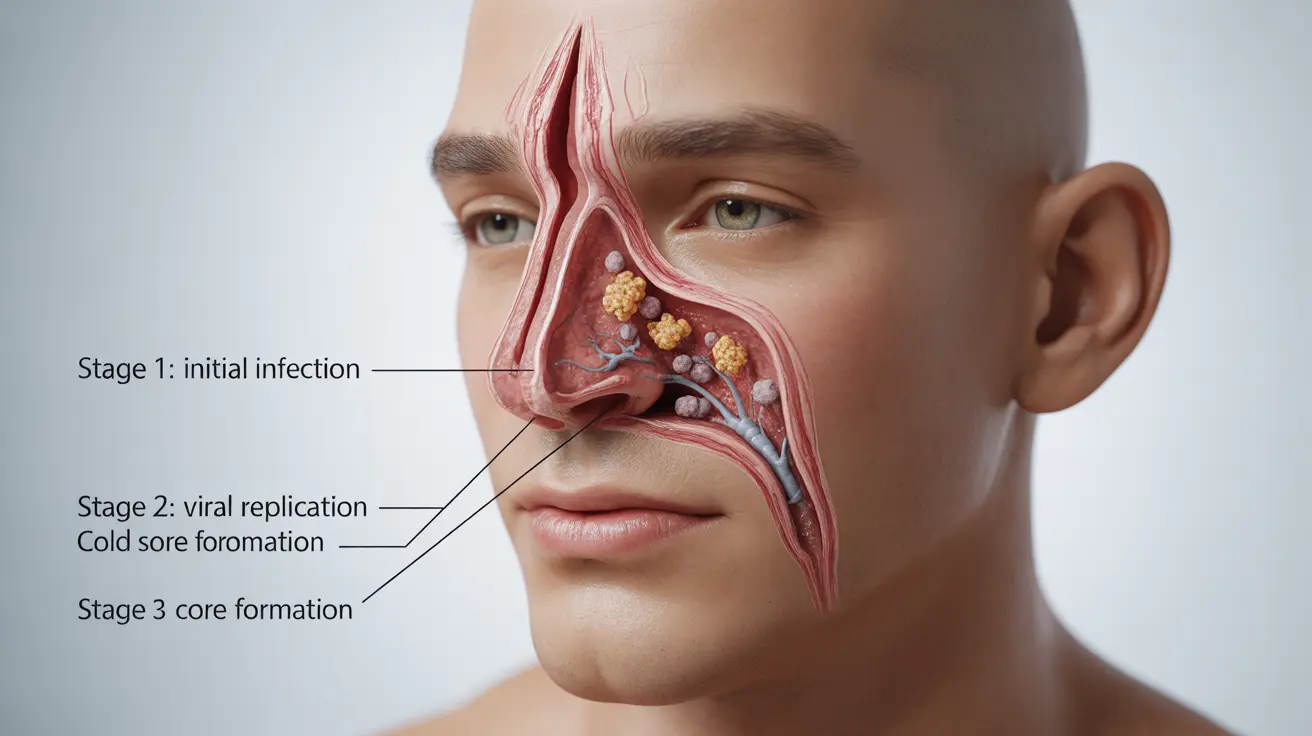Experiencing a cold sore inside the nose can be particularly uncomfortable and concerning. These painful blisters, caused by the herpes simplex virus (HSV-1), can develop not only on the lips but also within the nasal cavity. Understanding the causes, symptoms, and treatment options is crucial for managing this condition effectively.
While less common than oral cold sores, nasal cold sores require special attention due to their sensitive location and potential complications. This comprehensive guide will help you understand how to identify, treat, and prevent cold sores that appear inside the nose.
Understanding Nasal Cold Sores
A cold sore in the nose is caused by the HSV-1 virus, which can remain dormant in nerve cells and reactivate under certain conditions. When the virus becomes active, it travels along nerve pathways to the skin's surface, causing characteristic blisters and symptoms in and around the nose.
Common Symptoms and Stages
Cold sores in the nose typically progress through several distinct stages:
- Initial tingling or burning sensation
- Redness and swelling
- Formation of fluid-filled blisters
- Bursting and crusting of blisters
- Healing and scabbing
These symptoms may be accompanied by:
- Tenderness and pain around the affected area
- Nasal congestion
- Difficulty breathing through the affected nostril
- Occasional headaches
- Mild fever in some cases
Treatment Options and Pain Management
Several treatment approaches can help manage nasal cold sores effectively:
Medical Treatments
- Antiviral medications (prescription)
- Over-the-counter pain relievers
- Antiviral creams specifically formulated for cold sores
Home Care Methods
- Keeping the area clean and dry
- Using saline nasal sprays to maintain moisture
- Applying cold compresses to reduce swelling
- Taking L-lysine supplements (with healthcare provider approval)
Prevention and Reducing Transmission
Preventing the spread of cold sores is crucial for both personal health and protecting others. Key preventive measures include:
- Washing hands frequently
- Avoiding touching or scratching the affected area
- Using separate towels and personal items
- Avoiding close contact during outbreaks
- Managing stress levels
- Maintaining a strong immune system
Managing Triggers and Future Outbreaks
Common triggers for nasal cold sores include:
- Stress and anxiety
- Sun exposure
- Illness or weakened immune system
- Hormonal changes
- Physical trauma to the nose
- Extreme weather conditions
Frequently Asked Questions
What causes cold sores to appear inside the nose? Cold sores in the nose are caused by the HSV-1 virus. They can develop when the dormant virus becomes activated due to triggers like stress, illness, or immune system changes.
What are the common symptoms of a cold sore in the nose? Common symptoms include initial tingling, burning sensation, redness, swelling, followed by blister formation. You may also experience pain, nasal congestion, and difficulty breathing through the affected nostril.
How can I treat a cold sore inside my nose to reduce pain and speed healing? Treatment options include antiviral medications, keeping the area clean and dry, using saline sprays, and applying cold compresses. Over-the-counter pain relievers can help manage discomfort.
Is a cold sore in the nose contagious and how can I prevent spreading it to others? Yes, nasal cold sores are highly contagious. Prevent spreading by washing hands frequently, avoiding touching the affected area, using separate personal items, and avoiding close contact during outbreaks.
What triggers cold sores in the nose to come back and how can I reduce outbreaks? Common triggers include stress, sun exposure, illness, hormonal changes, and physical trauma. Reduce outbreaks by managing stress, protecting yourself from sun exposure, maintaining a healthy lifestyle, and strengthening your immune system.




